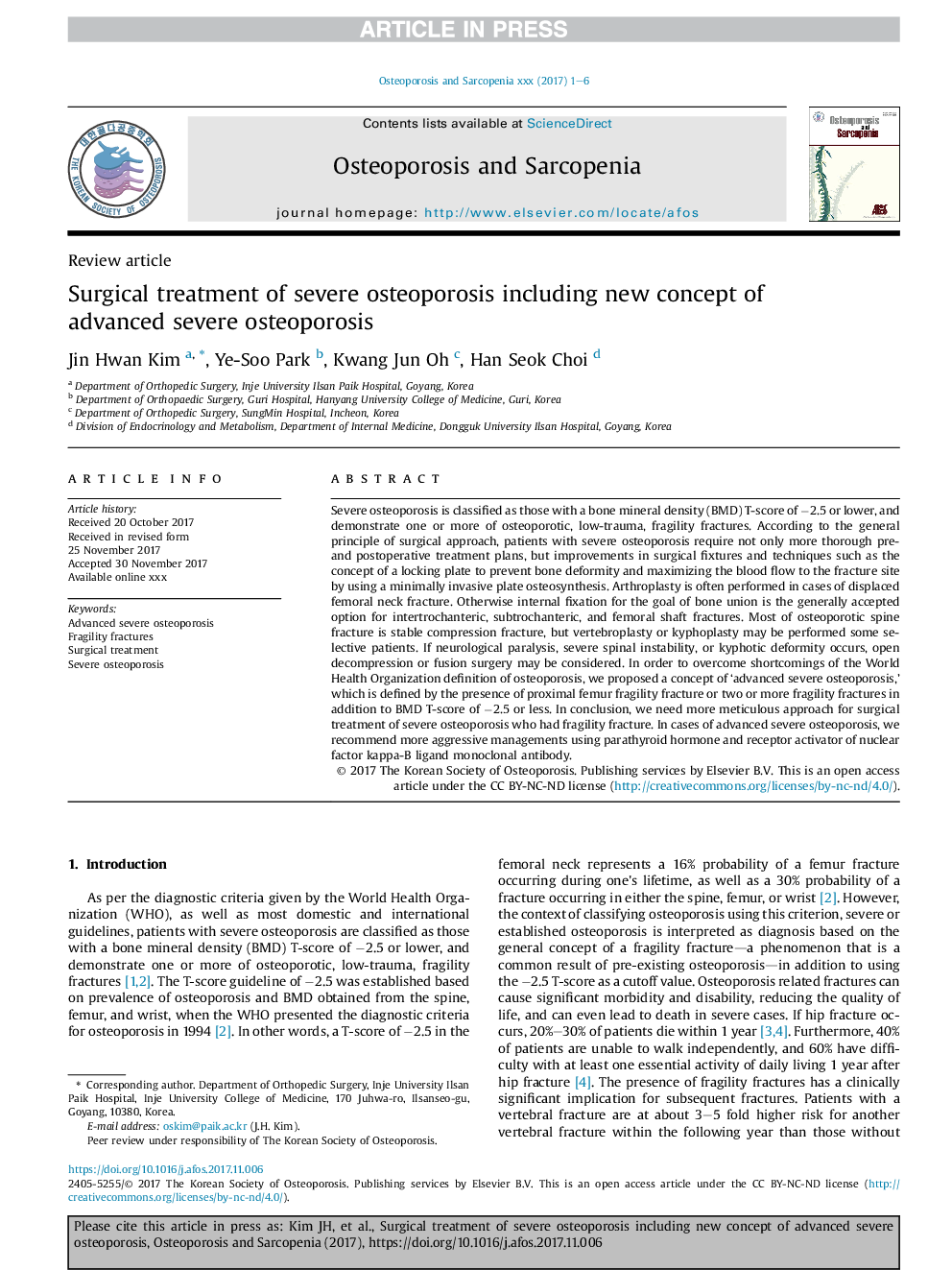| Article ID | Journal | Published Year | Pages | File Type |
|---|---|---|---|---|
| 8723986 | Osteoporosis and Sarcopenia | 2017 | 6 Pages |
Abstract
Severe osteoporosis is classified as those with a bone mineral density (BMD) T-score of â2.5 or lower, and demonstrate one or more of osteoporotic, low-trauma, fragility fractures. According to the general principle of surgical approach, patients with severe osteoporosis require not only more thorough pre- and postoperative treatment plans, but improvements in surgical fixtures and techniques such as the concept of a locking plate to prevent bone deformity and maximizing the blood flow to the fracture site by using a minimally invasive plate osteosynthesis. Arthroplasty is often performed in cases of displaced femoral neck fracture. Otherwise internal fixation for the goal of bone union is the generally accepted option for intertrochanteric, subtrochanteric, and femoral shaft fractures. Most of osteoporotic spine fracture is stable compression fracture, but vertebroplasty or kyphoplasty may be performed some selective patients. If neurological paralysis, severe spinal instability, or kyphotic deformity occurs, open decompression or fusion surgery may be considered. In order to overcome shortcomings of the World Health Organization definition of osteoporosis, we proposed a concept of 'advanced severe osteoporosis,' which is defined by the presence of proximal femur fragility fracture or two or more fragility fractures in addition to BMD T-score of â2.5 or less. In conclusion, we need more meticulous approach for surgical treatment of severe osteoporosis who had fragility fracture. In cases of advanced severe osteoporosis, we recommend more aggressive managements using parathyroid hormone and receptor activator of nuclear factor kappa-B ligand monoclonal antibody.
Related Topics
Health Sciences
Medicine and Dentistry
Endocrinology, Diabetes and Metabolism
Authors
Jin Hwan Kim, Ye-Soo Park, Kwang Jun Oh, Han Seok Choi,
